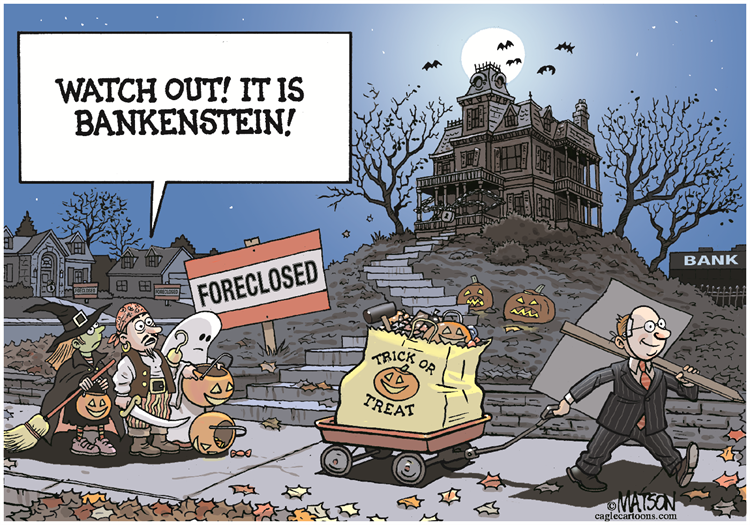
For years, we’ve talked about banks having a spaghetti systems structure aligned to a line of business product-centric organisation, that focuses upon the internal sales process rather than the customer. It’s true, but it’s due to the longevity of many banks.
Some banks are over 500 years old and most countries have banks that are the oldest companies in their country. Is it any wonder that the bank has developed over the years to be this walking dinosaur? And yes, lots of us like to talk about banks as being dinosaurs, e.g. I often wear this t-shirt at conferences …
… but the simile is wrong. Banks are not dinosaurs. They are BANKENSTEINS.
Like Frankenstein, banks are alive but not really. They live by continually stitching dead parts together to keep them going. No lightning or electricity needed, just constant injections of huge amounts of capital.
Bankensteins are half a millennia old for this reason and, in fact, if we take the oldest bank in the world – Banca Monte dei Paschi di Siena (MPS for short) – you really can see what a Bankenstein means.
Monte Paschi has become a burden to the Italian government since it was first bailed out in 2009. The state’s failure to dispose of the lender has become a symbol of the broader struggle to clean up a banking industry saddled with bad debts after decades of moribund economic growth.
Imagine. A bank created in 1472. The world’s oldest surviving bank. A bank that is older than the United States of America and it’s now America’s hottest purchase:
Italian officials have been trying to find a buyer for Banca Monte dei Paschi di Siena for years. But there’s at least one offer on the table they are reluctant to consider and which has been kept out of the public eye. A group of US investors led by former congressman Norman D Dicks has been courting Italian officials since the second half of 2020 with a €4bn plan that would use the cachet still attached to the world’s oldest bank to build a business with Italians abroad,
But let’s boil this down.
A bank that is bankrupt, bailed out by the Italian government and the EU; that is older than European wars; older than St Pauls Cathedral, the Houses of Parliament and the British Empire; a bank that existed before William Shakespeare, Abraham Lincoln, Queen Victoria, Oliver Cromwell and Galileo were born …
… IS STILL AROUND TODAY!
What is it like inside that bank?
I can’t tell you, but they are not the only bank that is seriously old. Most banks in most countries are old and have roots dating back centuries.
Imagine being inside any of those banks and imagine what’s under the hood.
Each year passes, and the people who work with and who use the bank keep adding bits. An extra credit product here; a new payment product there; diversifying into pensions and insurances over there; a marketing idea to add a credit card; a new CEO who says the bank should be more involved in investment markets; a CEO after that one who says what a mistake it was to move into investments markets; and so on and so forth.
Each time the banks changes management, products and direction, it has to undo what was done before. It keeps adding systems, processes and structures and many of the systems, processes and structures are added to overcome the weaknesses of the previous systems, processes and structures.
Eventually, it becomes Bankenstein: a bank that is purely a network of complex systems, processes and structures, stitched together and kept alive by huge teams of people, government, money and technology.
Forget zombie banks – the banks that survived 2008 – they’ve gone past the zombie stage to purely being banks that keep going if they can keep stitching themselves together to cover up the cracks of legacy, and can keep the heart beating by adding more dead parts and electrifying them with cash. Yes, some of them are Bankenstein.
Postscript: sorry to pick on MPS, but it is a good example of a Bankenstein
Postscript2: there is a reason why banks are called dinosaurs and zombies
Chris M Skinner
Chris Skinner is best known as an independent commentator on the financial markets through his blog, TheFinanser.com, as author of the bestselling book Digital Bank, and Chair of the European networking forum the Financial Services Club. He has been voted one of the most influential people in banking by The Financial Brand (as well as one of the best blogs), a FinTech Titan (Next Bank), one of the Fintech Leaders you need to follow (City AM, Deluxe and Jax Finance), as well as one of the Top 40 most influential people in financial technology by the Wall Street Journal's Financial News. To learn more click here...



